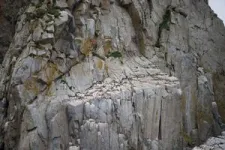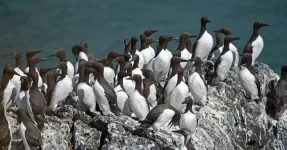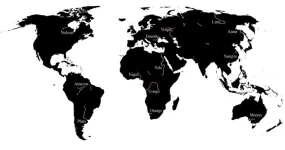New timeline for Neandertal gene flow event
Scientists unravel timing and impact of Neandertal gene flow into early modern humans
2024-12-12
(Press-News.org)
The study of ancient DNA has greatly advanced our knowledge of human evolution, including the discovery of gene flow from Neandertals into the common ancestors of modern humans. Neandertals and modern humans diverged about 500,000 years ago, with Neandertals living in Eurasia for the past 300,000 years. Then, sometime around 40,000 to 60,000 years ago, modern human groups left Africa and spread across Eurasia, encountering Neandertals along the way. As a result, most non-Africans harbor one to two percent Neandertal ancestry today. However, the precise timing and functional legacy of Neandertals remains elusive.
In a new study, researchers from the Max Planck Institute for Evolutionary Anthropology, Leipzig, and the University of California, Berkeley, examined the genomes of 300 present-day and ancient modern humans, including 59 individuals who lived between 2,000 and 45,000 years ago. "We set out to determine the timing and duration of Neandertal gene flow and the resulting impact on modern humans. To do this, we created a catalog of Neandertal ancestry segments. By comparing the segments among individuals from different time periods and geographic locations, we were able to show that the vast majority of Neandertal ancestry can be traced to a single, shared, extended period of gene flow into the common ancestors of all non-African individuals today," says Priya Moorjani from the University of California, Berkeley.
Neandertal ancestry revisited
By observing the length of the Neandertal DNA segments, which is related to the number of generations since the gene flow, the researchers inferred that the gene flow began about 50,000 years ago and continued for about 7,000 years. "This timeline closely matches the archaeological evidence for the overlap of Neandertals and modern humans in Europe. Some early modern humans - Oase, Ust'-Ishim, Zlatý kůň, and Bacho Kiro - possess substantial unique Neandertal ancestry that is not shared with modern humans after 40,000 years," says first author Leonardo Iasi from the Max Planck Institute for Evolutionary Anthropology.
These dates have several implications for human dispersal after the Out-of-Africa event, as they provide a lower bound on the timing of migration and the settlement of regions outside of Africa. For example, this suggests that the major migration out of Africa occurred no later than 43,500 years ago. Moreover, the population receiving Neandertal ancestry may have been highly structured during the gene flow event. "Diversification of humans outside of Africa may have begun during or soon after the Neandertal gene flow, which could partially explain the different levels of Neandertal ancestry among non-African populations and also reconcile our dates with archaeological evidence for the presence of modern humans in Southeast Asia and Oceania by about 47,000 years,“ says Benjamin Peter from the Max Planck Institute for Evolutionary Anthropology and the University of Rochester. "Studying more ancient genomes from Eurasia and Oceania could further our understanding of when humans spread to these regions.“
Functional impact of Neandertal ancestry
To understand the functional legacy of Neandertal ancestry, the researchers examined changes in Neandertal ancestry across the genome and over time. They identified some Neandertal regions that are present at high frequency, possibly because they were beneficial as early modern humans began to explore new environments outside of Africa. "These include genes related to immune function, skin pigmentation and metabolism," says Manjusha Chintalapati from the University of California, Berkeley. "On the other hand, there are also large regions of the genome that are completely devoid of Neandertal ancestry. These regions formed rapidly after the gene flow and were also absent from the earliest modern human genomes, 30,000 to 45,000-year-old individuals. Many Neandertal sequences may have been deleterious to humans and were therefore actively and rapidly selected against by evolution.“
This study sheds light on the complex history of gene flow from Neandertals into modern humans. It also highlights the power of genomic data to elucidate the legacy of human migrations and gene flow.
END
ELSE PRESS RELEASES FROM THIS DATE:
2024-12-12
LA JOLLA (December 12, 2024)—The decision between scrambled eggs or an apple for breakfast probably won’t make or break your day. However, for your cells, a decision between similar microscopic nutrients could determine their entire identity. If and how nutrient preference impacts cell identity has been a longstanding mystery for scientists—until a team of Salk Institute immunologists revealed a novel framework for the complicated relationship between nutrition and cell identity.
The answers came while the researchers ...
2024-12-12
After modern humans left Africa, they met and interbred with Neandertals, resulting in around two to three percent Neandertal DNA that can be found in the genomes of all people outside Africa today. However, little is known about the genetics of these first pioneers in Europe and the timing of the Neandertal admixture with non-Africans.
A key site in Europe is Zlatý kůň in Czechia, where a complete skull from a single individual who lived around 45,000 years ago was discovered and previously ...
2024-12-12
Viruses that infect and kill bacteria, called phages, hold promise as new treatment types for dangerous infections, including strains that have become resistant to antibiotics. Yet, virologists know little about how phages persist in the populations of bacterial cells they infect, hampering the development of phage therapies.
Published online December 13 in the journal Science, a new study offers the first evidence that a single bacterial species, the host of a phage, can maintain a diverse community of competing phage species. Led by researchers at NYU Grossman ...
2024-12-12
Murres, a common seabird, look a little like flying penguins. These stout, tuxedo-styled birds dive and swim in the ocean to eat small fish and then fly back to islands or coastal cliffs where they nest in large colonies. But their hardy physiques disguise how vulnerable these birds are to changing ocean conditions.
A University of Washington citizen science program — which trains coastal residents to search local beaches and document dead birds — has contributed to a new study, led by federal scientists, documenting the devastating effect of warming waters on common murres in Alaska.
In 2020, participants of the UW-led Coastal ...
2024-12-12
AMHERST, Mass. — A new study in Science by researchers from the University of Massachusetts Amherst and University of Cincinnati has mapped 35 years of river changes on a global scale for the first time. The work has revealed that 44% of the largest, downstream rivers saw a decrease in how much water flows through them every year, while 17% of the smallest upstream rivers saw increases. These changes have implications for flooding, ecosystem disruption, hydropower development interference and insufficient freshwater supplies.
Previous attempts to quantify ...
2024-12-12
mRNA vaccines clearly saved lives during the COVID-19 pandemic, but several studies suggest that older people had a somewhat reduced immune response to the vaccines when compared with younger adults. Why? Researchers at Boston Children’s Hospital, led by Byron Brook, PhD, David Dowling, PhD, and Ofer Levy, MD, PhD, found some answers — while providing proof-of-concept of a new system that can model mRNA vaccine responses in a dish. This, in turn, could help expedite efforts to make ...
2024-12-12
COLLEGE PARK, Md. – Dr. Mika Hamer is about to go ghost hunting. Thanks to a $100K grant from the Robert Johnson Wood Foundation (RWJF), the University of Maryland School of Public Health researcher aims to uncover the extent of so-called “ghost networks” in Medicare Advantage health insurance plans.
A “ghost network” describes the difference between advertised in-network healthcare providers for a given insurance plan and the providers who are in fact available to deliver care to patients enrolled in those plans – meaning a patient ...
2024-12-12
Some patients with diabetes develop a serious condition known as diabetic cardiomyopathy, which is slow and cannot be directly attributed to hypertension or other cardiovascular disorders. This often under-diagnosed heart function impairment is one of the leading causes of death in diabetic patients and it affects both type 1 and type 2 diabetes. There is no current specific drug treatment or clinical protocol approved to address this disease.
A study published in the journal Pharmacological Research describes a potential target that could spur the ...
2024-12-12
In what is believed to be the first study of its kind, University of Michigan researchers dug deeper into the numbers-only data of COVID-19-era suicides and evaluated the narratives contained in reports from coroners, medical examiners, police and vital statistics.
The researchers sought to understand how the crisis influenced suicide deaths in the first year of the pandemic, how the response by governments, employers and others influenced individuals, and if their handling could inform future public health responses.
"Our study adds much-needed context and meaning to the data that have assumed the deaths are ...
2024-12-12
Soil plays a much bigger role in the spread of antibiotic resistance than one might imagine.
Surprisingly, the ground beneath us is packed with antibiotic resistance genes (ARGs) — tiny codes that allow bacteria to resist antibiotics. Human activities, such as pollution and changing land use, can disturb soil ecosystems and make it easier for resistance genes to transfer from soil bacteria and infect humans.
Jingqiu Liao, assistant professor in civil and environmental engineering, is on a mission to understand how soil bacteria contribute to ...
LAST 30 PRESS RELEASES:
[Press-News.org] New timeline for Neandertal gene flow event
Scientists unravel timing and impact of Neandertal gene flow into early modern humans









